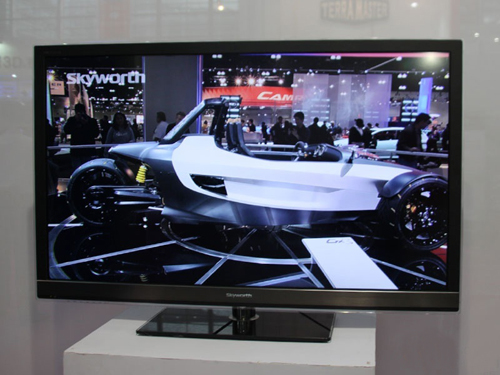 The advancement of triple play integration has made the intelligentization and networking the main direction for the development of the color TV industry. Multi-screen integration is expected to drive the upgrading of traditional industries and open another survival mode for TV companies. Recently, Chen Xuemin, vice president of Broadband Communications Business Unit of Broadcom Corporation, said in an exclusive interview with a reporter from China Electronics News: “Multi-screen interactions are based on home gateways, and the conversion from personal terminals to home terminals is realized, and multi-screen convergence is finally realized. It will be reflected in the convergence of application platforms."
The advancement of triple play integration has made the intelligentization and networking the main direction for the development of the color TV industry. Multi-screen integration is expected to drive the upgrading of traditional industries and open another survival mode for TV companies. Recently, Chen Xuemin, vice president of Broadband Communications Business Unit of Broadcom Corporation, said in an exclusive interview with a reporter from China Electronics News: “Multi-screen interactions are based on home gateways, and the conversion from personal terminals to home terminals is realized, and multi-screen convergence is finally realized. It will be reflected in the convergence of application platforms." Positioning the Home Connectable Mode Today, the SD/HD transition to 3D has driven the need for STB and digital TV upgrades. On the one hand, improving the user experience must speed up users' access to the Internet. On the other hand, the demand for multi-screen interactions promotes the development of home networking and wireless LAN technologies.
The multi-screen business is concerned because it supplements and extends existing cable television services and extends the service content to terminals other than televisions. Therefore, multi-screen services are not only concerned by operators and middleware vendors, but are also favored by upstream vendors. Major foreign operators have launched value-added services with home gateways as the core to build new home network services.
However, in Chen Xuemin's view, the home gateway must really enter the home. How to locate the home connectable mode is the biggest problem. At present, the external backbone network is a fiber-optic network. How should China's home network backbone network be located? Chen Xuemin told reporters: “In North America, MoCA has been evaluated to be most suitable for home backbone networks, and wireless networks can also be used. Therefore, for China, the first choice is the intra-household backbone network, followed by implementation. Operators have great challenges."
Unified standards are fundamental Although home gateways play an important role in the evolution of smart TVs, our home gateways have always had no unified standards. Chen Xuemin believes that from the operator's point of view, cluttered or unsustainable standards are not conducive to industrial development. He said: "For example, operators such as Beijing Gehua Cable and Shenzhen Tianwei Video have previously deployed modem products. The next generation of products should be laid out. Operators must consider equipment issues on the one hand, and they must also be in actual operating mode on the other. It is fundamental to realize value-added services."
In recent years, Broadcom's broadband communications department has participated in the formulation of many international standards and Chinese standards to achieve the unification of home gateway standards. Chen Xuemin told reporters that at present, DLNA (Digital Living Network Alliance) is an international standard. In China, we hope that most of the standards will be led by enterprises, so that we can truly translate the standards into products. C-DOCSIS and China CRM are Broadcom. Mainly supported standards. However, how to achieve standardized access is an urgent problem to be solved.
The reporter learned that the DOCSIS standard has solved the problem of "too many solutions and poor interoperability among different manufacturers and equipments" in the market, which has been recognized by equipment manufacturers, solution manufacturers, and set-top box manufacturers. It is reported that Shenzhen Tianwei Video and Beijing Gehua Cable are already preparing to deploy the DOCSIS EoC test site.
RAM/RFM Intermediate Frequency Capacitors
RAM/RFM intermediate frequency capacitors
RAM/RFM intermediate frequency capacitors
YANGZHOU POSITIONING TECH CO., LTD , https://www.yzpstcc.com